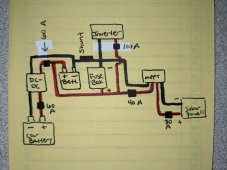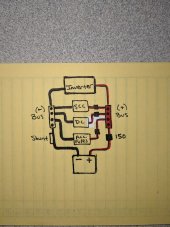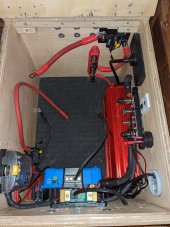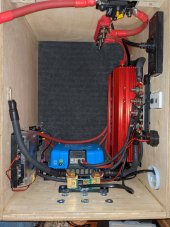tjoiner1986
New Member
Just looking for a 2nd opinion here.
200 watts worth of 12V panels
Victron SmartSolar 100/30 charge controller
Orion 12/12-30 isolated DC charger for alternator charging
BMV-712 with shunt for battery monitoring and to remotely disconnect the DC charger during low temps
1200-watt Giandel inverter (may upgrade to a Multiplus down the road if I decide to add shore power)

200 watts worth of 12V panels
Victron SmartSolar 100/30 charge controller
Orion 12/12-30 isolated DC charger for alternator charging
BMV-712 with shunt for battery monitoring and to remotely disconnect the DC charger during low temps
1200-watt Giandel inverter (may upgrade to a Multiplus down the road if I decide to add shore power)
- 1200W inverter divided by 12V equals 100A breaker, correct?
- 60A breakers on the charger because that's what the manual calls for.
- 6 AWG going TO the charger because that's what the manual calls for.
- Since the charger only outputs no more than 30 amps, I may do 8 AWG (rated 40 A) and a 40 A breaker coming FROM the charger.
- Per the Victron manual, the BMV shunt goes directly to the battery (-) with the load attached to the other end.
- 10 AWG between panels and charge controller.
- 8 AWG between the charge controller and the battery.
- 4 AWG between the inverter, shunt, batter, everything else.

Last edited:








